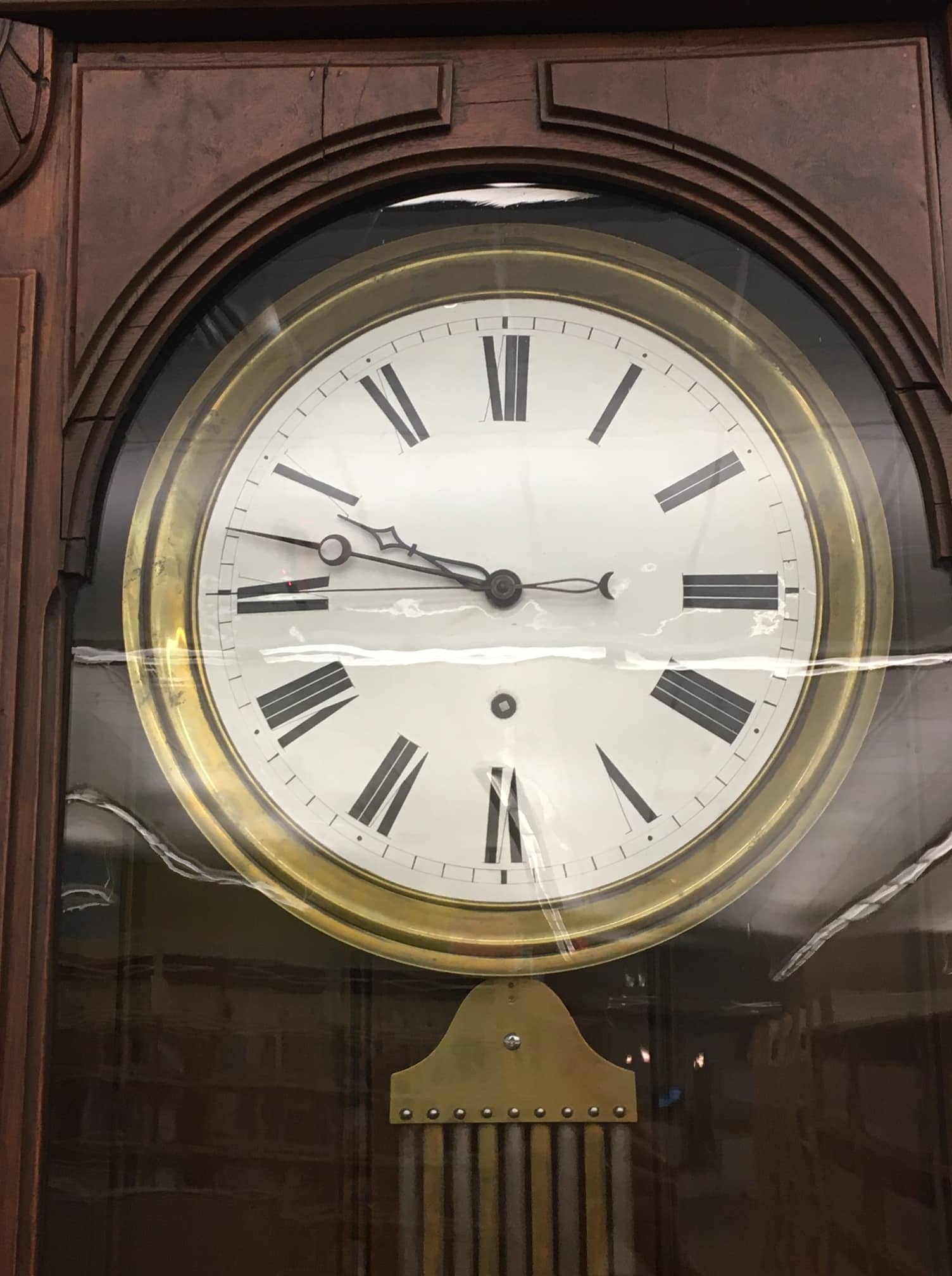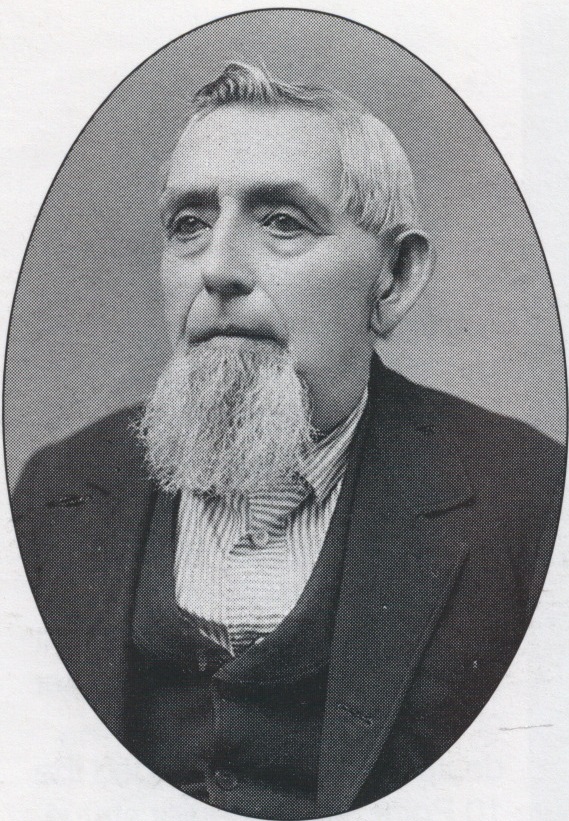Thanks to the generosity of Busey Bank of Pekin (formerly Herget Bank), the Pekin Public Library recently acquired another antique longcase clock.
Many Pekinites will recall the impressive grandfather clock standing at the west end of the former Herget Bank headquarters located in downtown Pekin at 33 S. Fourth St. Herget Bank merged with Busey in the early months of 2015, after which the Herget main bank became the main Pekin branch of Busey Bank.
However, in November that branch was closed. Prior to the closing of the former Herget building, Busey distributed its collection to other entities. As was recently announced, Busey has donated to the library a fine model of the Pekin Park Pavilion that was built in the mid-1990s as a birdhouse by Ken Jansen and detailed Henry Cakora. The Park Pavilion model and its display case stood inside the Herget building since 1995, and is now on display in the library’s Local History Room.
The bank’s collection of historical photographs and other archival materials related to the history of Pekin, the history of Herget Bank, and the genealogy of the Herget family have also been transferred to the Pekin Public Library’s own archives.
Busey also donated the old Herget Bank longcase clock to the library. The library has long had two antique longcase clocks, one a regulator that was first donated to the library by the Pekin Woman’s Club in 1904, and the other a Bavarian grandfather clock given to the library circa 1940 by the widow and sons of late former Pekin Mayor Everett Wilson. The Bavarian “grandfather” clock stands the Youth Services department, while the 1904 regulator (which children visiting the library fancifully, if inaccurately, called “the grandmother clock”) stands in the Adult Services department.
The Busey/Herget clock joined those two clocks earlier this month, and has been erected in the Adult Services department against the wall along Fourth Street, near the DVD shelves. The clock was placed in a prominent spot so that it can be easily seen from the north (wider) entrance to Adult Services.

The library’s “new-old” clock is about eight feet in height and is topped with a carved depiction of the bust of a man with a feather in his hat, flanked on either side by what look like bound sheaves of grain. At about the midpoint of the left and right sides of the case are carved rosettes. But the feature of the clock that most stands out is the pendulum’s large, brass disk, about one foot in diameter.



What can be learned about the history and provenance of the Herget longcase clock? It is already known that this clock stood in the Herget main bank from the time that structure was built in 1957-58. Prior to the construction of the main bank on Fourth Street, Herget National Bank stood at the northwest corner of the intersection of Court and Fourth streets (which today is the location of Yesterday’s Bar & Grill). It is known that the Herget clock also stood in the lobby of the old Fourth-and-Court home of Herget Bank.
But for how many years did the clock keep the time at old Herget Bank? I have not yet determined the exact year when Herget Bank acquired the clock. However, a look inside the clock’s case shows a name plate that reads, “H. Birkenbusch & Son.”

The jeweler’s business at 420 Court St. was opened by J. J. Woelfle in 1867. Birkenbusch became Woelfle’s apprentice when he was just 16 years old, and then in 1887 Woelfle handed the business over to Birkenbusch. Pekin city directories show Henry Birkenbusch running the business alone until 1930, in which year the firm changed its name to “H. Birkenbusch & Son,” when Henry’s son Louis became a partner. It kept that name until Henry’s death in 1947, after 78 years in business at the same location.

The clock’s nameplate thus narrows down the years when Herget Bank purchased the clock from Birkenbush to 1930-1947.
There are some very special historical and personal ties that connect Birkenbusch Jewelry, Herget National Bank, and the Pekin Public Library. For instance, Henry Birkenbusch served on Herget Bank’s original board of directors. But one of the most important link is that, even prior to become his father’s partner, Louis Birkenbusch was a master craftsman who was skilled in the construction of longcase clocks. In fact, according to “Pekin: A Pictorial History” (1998, 2004), page 140, Louis Birkenbusch himself built both the regulator (“grandmother” clock) that the Pekin Woman’s Club donated to the library in 1904 as well as Herget Bank’s grandfather clock.
That means two of the library’s three clocks are Birkenbusch clocks.

Furthermore, it has been observed that Busey’s donation of the old Herget clock to the library is most fitting in light of the fact that it was George Herget, the bank’s founder, who had donated the land for the construction of the old 1902 Carnegie library – yet another way that the Herget legacy in Pekin continues, even as the bank’s beautiful clock continues to mark the passage of time from its new home in the library’s Adult Services . . . placed in a space within the original Herget land donation.












